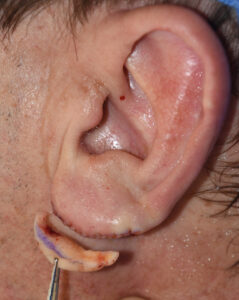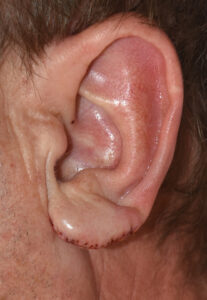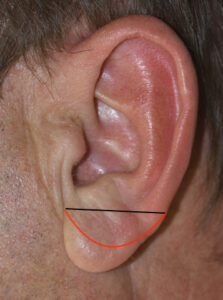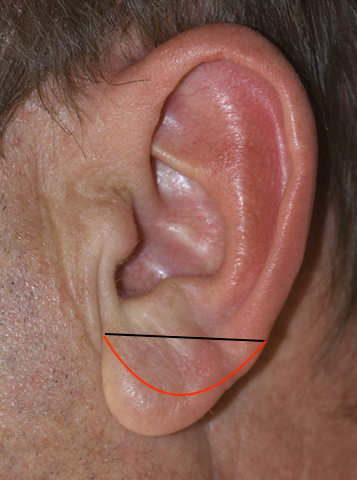Background: The elongated earlobe, whether by natural development or has occurred by aging, is never viewed as a positive aesthetic ear feature. It is the only part of the ear that has no cartilage and is comprised of soft tissue only. It can be stretched by gravity or being weighed down over time by various adornments. It has relatively poor tissue elasticity so it is easy stretched with little rebound capability.
The earlobe generally occupies 30% or less of the total ear height/length. Anything longer would be considered unaesthetic. But anthropometrics aside what really matters is how person sees the size and shape of their earlobes.
The most common ear procedure performed is probably the split earlobe repair for restoration of is shape. Earlobe reduction is less commonly performed probably due to lack of awareness that it can be done or concerns about adverse scarring from doing so. Both men and women undergo the procedure….men more often as an isolated procedure and women more in conjunction with facelift surgery in my experience.
Case Study: This male was undergoing a variety of other procedures which was an opportune time to address his earlobe concerns. His earlobes has always been a bit long but seemed to be getting longer and disproportionate to the rest of his ear height.


The inferior helical rim technique is a ‘clamshell’ approach to earlobe reduction. It essentially creates open anterior and posterior skin surfaces of he earlobe which are then brought together to make a new inferior helical rim edge. It is essentially scarless because the well healed scar remains away from the visible anterior skin surface.

Highlights:
- The non-cartilaginous portion of the ear (earlobe) is prone to elongation with aging.
- Earlobe reduction can be done by various techniques whose application partially depends on the shape of the ear-facial attachment.
- The inferior helical rim lobe reduction technique produces the least visible scarring and is adaptable to most earlobe shapes.
Dr. Barry Eppley
Indianapolis, Indiana






